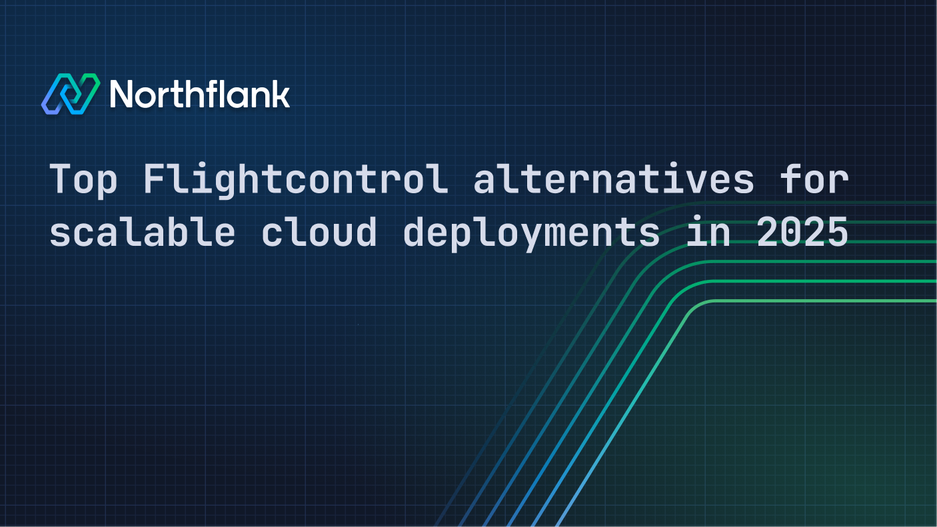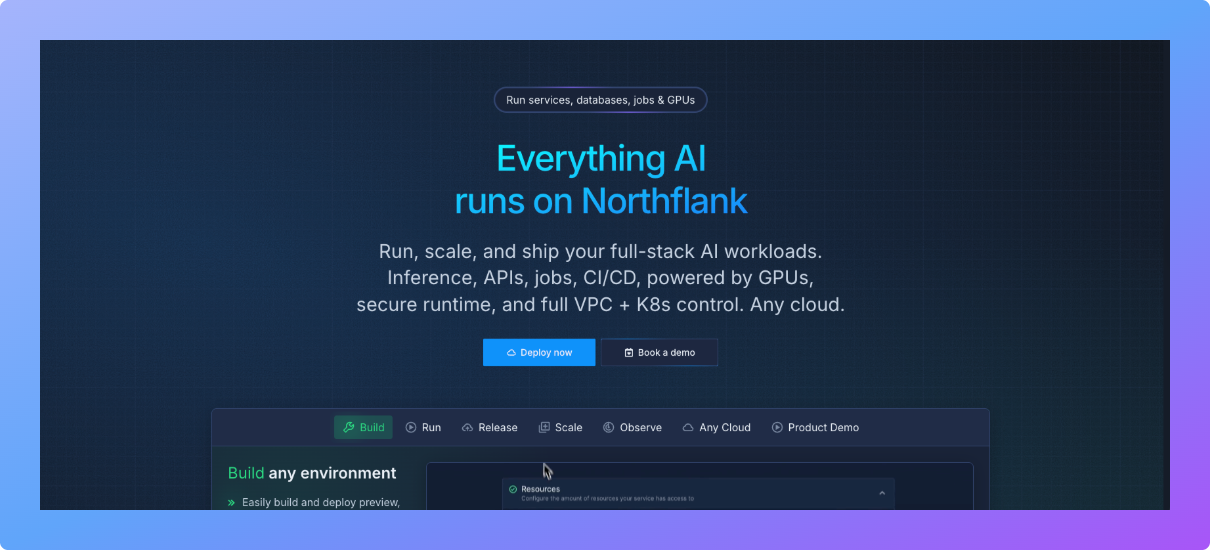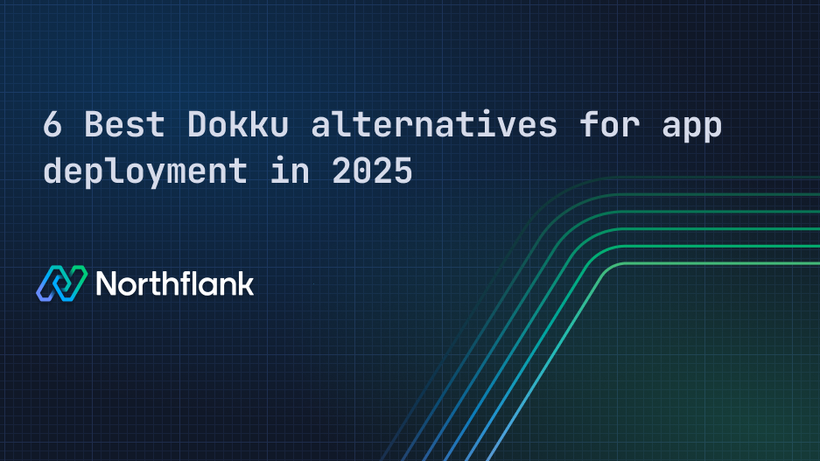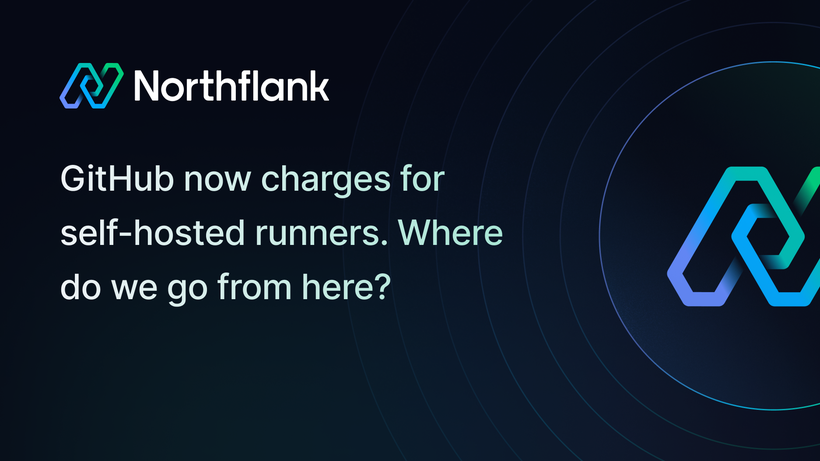

Top Flightcontrol alternatives for scalable cloud deployments in 2025
Deploying applications to AWS can be challenging, especially as infrastructure complexity grows. Flightcontrol has helped address this by giving developers a smoother way to ship applications on their own AWS accounts, without managing the raw details of ECS, Lambda, or Terraform. It’s been a strong fit for many teams looking to move fast with less overhead.
But as teams scale and requirements evolve, some begin exploring other options. You might need more flexibility across clouds, better support for background workers or scheduled jobs, or a platform that’s easier to standardize across multiple teams and environments.
In this guide, we’ll explore why some engineering teams consider alternatives to Flightcontrol, what features matter most when evaluating new platforms, and how tools like Northflank are addressing the needs of teams building and scaling modern applications.
If you’re short on time, here’s a quick look at the top alternatives to Flightcontrol, and why teams are making the switch:
- Northflank – A flexible, production-ready platform with support for bring-your-own-cloud (AWS, GCP, Azure, and more), GPU workloads, LLM deployment, background jobs, databases, advanced CI/CD, preview environments, and multi-service environments. Ideal for growing teams that want full control without Kubernetes overhead.
- Qovery – An internal developer platform with Git-based workflows and managed Kubernetes. Works well for teams focused on automation.
- Porter – Kubernetes-native platform with templating support. Best suited for teams already familiar with Kubernetes.
- Cloud66 – Infrastructure-as-code approach to Kubernetes with multi-cloud support. Better for ops-heavy teams with hands-on infrastructure needs.
- Portainer – GUI-based Kubernetes and container management tool. Lightweight, but not a full deployment platform.
Flightcontrol helps teams deploy to AWS without managing low-level infrastructure. For teams focused on speed, it’s a strong option. You get control of your own AWS account with a simplified developer experience.
As systems grow and team needs evolve, some limitations can start to show.
Flightcontrol only supports AWS, which can become a challenge if you plan to work across GCP, Azure, or hybrid environments. It also offers less flexibility around GPU-heavy workloads. For teams building more complex systems, such as background workers, scheduled tasks, or machine learning pipelines, it may not be the easiest fit.
Flightcontrol does its job well for teams with simpler needs. But as your infrastructure grows more demanding, it can be worth exploring platforms that give you more flexibility, broader workload support, and room to scale.
Earlier, we looked at why you may consider an alternative to Flightcontrol, and if you're already thinking about switching platforms, the goal isn’t just to fill in what Flightcontrol lacks. It's about choosing a solution that matches where your team is headed. The best deployment platforms give you the flexibility to grow, the tools to move fast, and the visibility to operate with confidence.
Here are the key factors to consider when evaluating your next platform:
Can the platform run across AWS, GCP, Azure, or even in self-hosted or air-gapped environments? Even if you’re all-in on one provider now, having multi-cloud support protects you from lock-in and future infrastructure limits.
A great platform should make life easier for developers, not introduce new layers of complexity. Look for fast feedback loops, clear logs, intuitive UI and CLI workflows, and smooth environment management. Everything should feel consistent, from local development to production deployments.
AI and ML applications come with unique requirements. Does the platform support GPU-backed services, model-serving APIs, and background workers? Can it run scheduled tasks and manage resource-heavy jobs without extra infrastructure overhead?
As your product evolves, you’ll likely move beyond just HTTP apps. Your platform should be ready for that.
You shouldn't have to become a Kubernetes expert to scale effectively. The right platform will handle horizontal and vertical scaling, stateless and stateful services, autoscaling, and resource tuning behind the scenes, with room to customize when needed.
Native support for Git-based workflows, CI/CD pipelines, secrets management, container registries, monitoring tools like Datadog or Prometheus, and infrastructure-as-code frameworks like Terraform or Pulumi can make a huge difference in day-to-day productivity.
Look for usage-based pricing with clear breakdowns per environment or service. Bonus points if the platform includes built-in cost visibility and resource optimization tools. You shouldn’t need to guess what your bill will look like next month.
Whether you're an early-stage company or already working in a regulated space, features like role-based access control, audit logging, encryption, and compliance certifications (SOC 2, HIPAA, GDPR) are non-negotiable. These should be easy to enable, not buried behind an enterprise sales call.
Your platform is part of your reliability stack. Look for SLAs, built-in monitoring, rollback options, automatic restarts for failing services, and a history of good incident response. You want infrastructure that disappears when things are going well, and shows up fast when something breaks.
Once you know what you're looking for in an alternative, it becomes easier to filter out platforms that don’t align with your workflow. Here are five strong alternatives to Flightcontrol, each solving different parts of the deployment puzzle.
Northflank is a platform that enables developers to build, deploy, and scale applications, services, databases, GPUs, LLMs, and jobs on any cloud through a self-service approach. For DevOps and platform teams, Northflank provides a powerful abstraction layer over Kubernetes, enabling templated, standardized production releases with intelligent defaults while maintaining necessary configurability.

Key features:
- Kubernetes-powered, full-stack platform
- Deploy containers, databases, and scheduled jobs
- Bring your own cloud (AWS, GCP, Azure, etc.)
- CI/CD integration, real-time logs, with a developer-friendly and consistent experience across UI, CLI, API, and GitOps
- GPU support for AI workloads
- Automatic preview environments and seamless promotion to dev, staging, and production
Why choose Northflank over Flightcontrol?
- Greater flexibility in cloud provider selection.
- More advanced automation and CI/CD features.
- Enterprise-grade security and monitoring tools.
- Lower costs with a transparent pay-as-you-go pricing model.
Potential drawbacks:
- Highly experienced DevOps teams might find it restrictive compared to directly managing raw Kubernetes clusters. It’s a fine balance between ease of use, flexibility, and customization; that line differs for every organization.
See how Weights company uses Northflank to scale to millions of users without a DevOps team
Qovery is a DevOps automation platform and an internal developer platform (IDP) that simplifies cloud infrastructure management. It allows developers to deploy applications quickly and efficiently without needing deep knowledge of the underlying infrastructure like Kubernetes.

Key Features:
- Fully managed Kubernetes with deep cloud provider integration
- Built-in CI/CD and GitOps workflows
- Automatic scaling and cost optimization
Potential Drawbacks:
- Pricing at scale can be expensive, especially as additional deployment minutes and features are required
- While it supports multiple cloud providers, configuring multi-cloud deployments can be complex
If you’re looking for alternatives to Qovery, see the best Qovery alternatives
Porter provides a Kubernetes-based platform that aims to simplify container management and deployment.

Key features:
- Kubernetes-native approach with simplified UI
- Good template system for common deployments
Potential considerations:
- Steeper learning curve for teams without Kubernetes experience
- Less robust CI/CD capabilities compared to Northflank
- Limited enterprise support options
For a closer look at how Porter compares to other tools, this article offers a well-rounded analysis.
Cloud66 is a DevOps automation platform that provides production-ready Kubernetes deployments with multi-cloud and on-premise support.

Key features:
- Infrastructure as code for Kubernetes clusters
- Multi-cloud compatibility (AWS, GCP, Azure, on-prem)
- Advanced security and compliance features
Potential drawbacks:
- Requires more hands-on infrastructure management
- More complex setup compared to fully managed platforms
Portainer simplifies container and Kubernetes management, offering a GUI-based approach for managing deployments across on-prem, hybrid, and cloud environments.

Key features:
- GUI-based Kubernetes management
- Multi-cloud and on-prem deployment support
- Role-based access control for secure operations
Potential drawbacks:
- More focused on Kubernetes management rather than full deployment automation
- Lacks built-in CI/CD and GitOps features
For a closer look at how Portainer compares to other tools, this article offers a well-rounded analysis.
Selecting the optimal Flightcontrol alternative involves a systematic approach:
- Identify your primary challenges: Pinpoint the specific limitations you're experiencing with Flightcontrol.
- Prioritize requirements: Create a weighted list of features and capabilities most crucial to your workflows.
- Consider team expertise: Evaluate your team's familiarity with the underlying technologies of each platform.
- Conduct targeted proof of concept: Test your most critical workloads on shortlisted platforms.
- Evaluate total cost of ownership: Look beyond base pricing to include potential savings in developer time and infrastructure optimization.
- Plan for growth: Select a platform that can accommodate your projected scaling needs.
Based on these criteria, Northflank consistently emerges as the superior choice in 2025, particularly for teams seeking an optimal balance of power, flexibility, and usability. Its comprehensive feature set addresses common Flightcontrol limitations while providing additional capabilities that enhance productivity and control.
There’s no shortage of platforms trying to simplify cloud deployments, but few strike the right balance between usability and long-term flexibility. Flightcontrol delivers well on its promise, especially for teams that rely heavily on AWS. But not every team stays in that phase for long.
When infrastructure involves multiple services, background workers, AI workloads, or tighter compliance requirements, the platform behind your deployments matters significantly more. That’s when teams start reevaluating what they need, not just today, but six months or a year from now.
The best alternative is one that fits how your team actually works, while providing you with the control and scalability to support what’s coming next.
If you're ready to explore a more flexible approach, Northflank offers a modern platform built for growing teams and production-grade workloads.
Ready to explore? Try Northflank or compare platforms head-to-head with your current stack.


